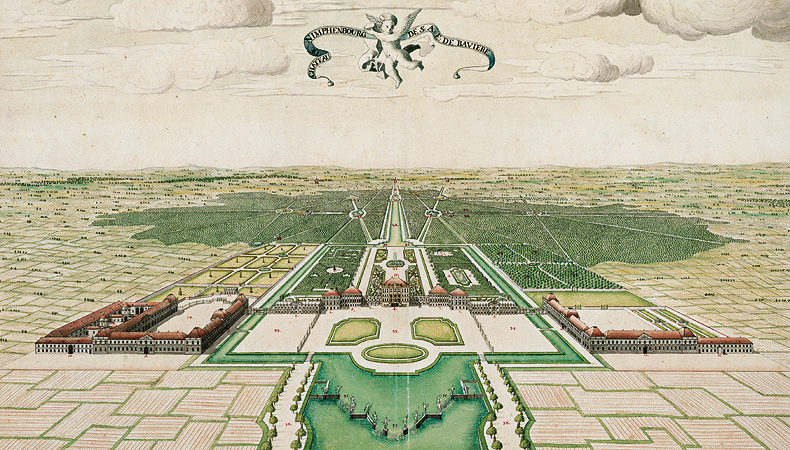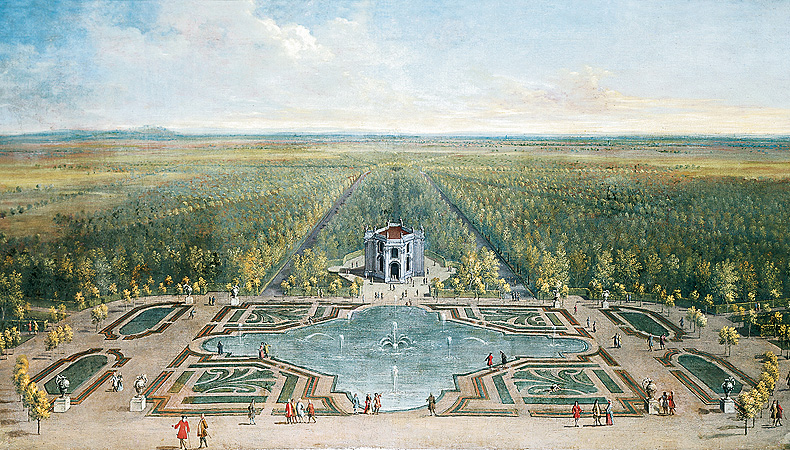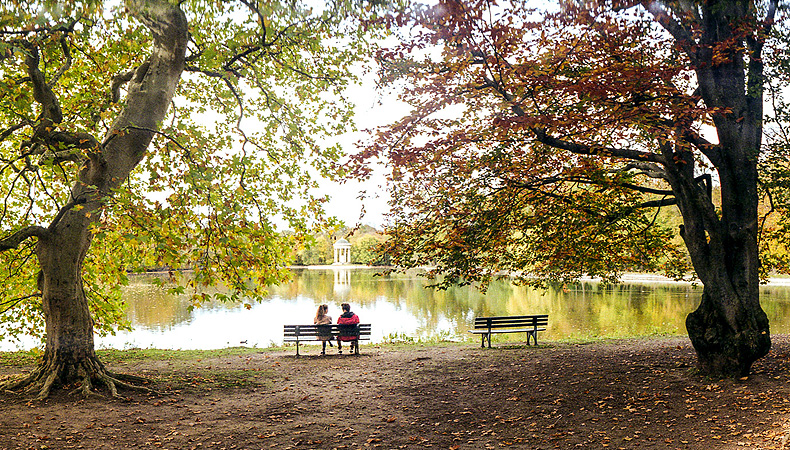Main information:
Nymphenburg Park
From a baroque park to a landscape garden

Nymphenburg Palace and Park (detail), Johann Adam von Zisla, around 1723
© Staatliche Graphische Sammlung München
The Bavarian Elector Ferdinand Maria presented his wife Henriette Adelaide with the inn, Schwaige Kemnat, to the west of the royal capital Munich, on the occasion of the long-awaited birth of a successor to the throne Max Emanuel in 1663. The Electress created her "borgo delle ninfe" here, a summer palace with small gardens. From 1701, Max Emanuel had the palace enlarged, the gardens reshaped and a canal dug out to divert water from the Würm to the park. Max Emanuel however had to leave Bavaria, in consequence of his defeat in the Spanish War of Succession in 1704. As a result, all work was initially interrupted.
It was only in the period from 1715 that decisive constructional work was carried out to turn the palace and gardens into the Baroque highlight of ubiquitous fame. Nymphenburg Park was completed based on a design by Dominique Girard and the cooperation of Joseph Effner. Axial-symmetrical designed gardens with an elaborate parterre with hedged areas bordering on both sides, featuring facilities intended for the amusement of the court, were created in front of the west side of the palace.
In juxtaposition to this designed section of the gardens, was an extensive forest-like park, dominated by a central-axial canal and divided by numerous avenues and perspective axes. Located here in symmetrical arrangement, were also the pavilion-style park palaces Badenburg and Pagodenburg with their regular gardens, the hermitage Magdalenenklause as an artificial ruin, and the Amalienburg erected 1731-39.

In the 18th century the Pagodenburg had a formal garden with a pool in front of it.
Painting by Franz Joachim Beich, 1722
Photo: Bayerische Schlösserverwaltung
In the year 1800, the Bavarian Elector Max IV Joseph commissioned the reshaping of the palace park. Unaffected by this, were only the central-axial parts of the Baroque gardens, i.e. the parterre near the palace reduced to its basic structure, the canal with the avenues on both sides and the cascade. Friedrich Ludwig von Sckell, leading garden artist of his time, carried out re-landscaping of the grounds of Nymphenburg between 1804 and 1823. He replaced the original regular beds and hedged areas with natural-looking design elements, a selection of trees and shrubs arranged to grow as nature intended, meadows with moulded surface levels and artfully contoured woodland borders, lakes and brooks with banks and islands shaped true to nature, and elegantly winding paths.
Sckell thereby created stimulating landscape scenery, which integrated the Baroque pavilions as effectively as the classical Monopteros by the Great Lake erected in 1865, to replace two earlier wooden constructions. In Nymphenburg, Friedrich Ludwig von Sckell succeeded in creating a classical landscape garden, whose special charm lay in the continuation of characteristic features of the gardens originating from previous and fundamentally different stylistic epochs. The grounds have remained virtually unchanged in their basic structure until today.


Facebook Instagram YouTube